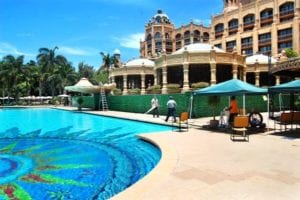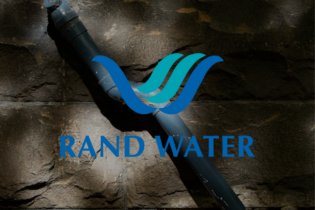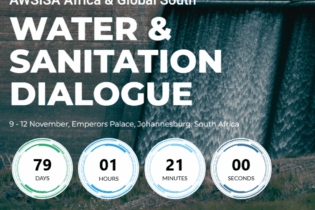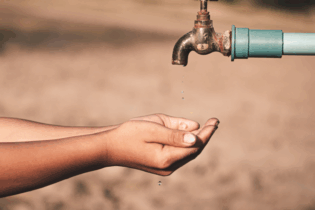When the main 200 mm uPVC pipe to the clamshell water feature evidenced a leak, causing major water losses and ensuring the feature became non-functional, the only viable solution was to reline the pipe with Nu Flow technology, SA Leak Detection Distributors’ David Wade tells Chantelle Mattheus.
The first South African project for the Benoni-based firm, relining a clamshell water feature pipe at Sun City, in South Africa’s North West province, was necessitated because the pipe ran for approximately 145 m under a 1.5 m thick reinforced concrete slab with distinctive stone paving on top. “To chop up a 1.5 m thick reinforced concrete would have had time, money, aesthetic and business continuity issues,” explains Wade. The Nu Flow relining system had the added advantage of being less time consuming. “If normally you are going to excavate145 m of pipe under a 1.5 m thick reinforced concrete slab, this would entail weeks of work on-site. If we are relining it, it is a day or two, depending on how many bends and laterals are in the pipeline and so on,” says Wade. Although there are competitors in the market that could possibly compare cost-wise on large diameter pipes, “none of the competitors can do multiple 90-degree bends without excavating launch pits on either end of the pipe,” says Wade. “Nu Flow is able to launch from existing access points like rodding eyes, fire hydrants, drain outlets and air release valves.” Tried and tested technology The Nu Flow system is currently manufactured in Canada, where it has been used for more than two decades. SA Leak Detection Distributors, however, will soon be manufacturing epoxy and liners locally. The Nu Flow relining process comprises two systems – one for potable water and one for drains – which serve to rehabilitate the inner infrastructure of deteriorated or failing water and drainage piping systems using cured-in-place epoxy pipe lining solutions. Epoxy coating is not only used as a long-term solution to prevent corrosion and leaks, but it is commonly used as a preventative tool to preserve the life of existing pipe systems, says Wade. Potable properties With the potable water pipe relining system, the pipe network is first sand-blasted to “clean” the pipes’ interiors, before the red epoxy is air-blasted through the network. The epoxy unfolds itself evenly due to the air pressure and tempreture, attaining an even lining throughout. The potable water system can be applied to pipe diameters from 15 to 300 mm. The potable water solution is primarily used to fix pinhole leaks. “From a preventative point of view, because the water is no longer in contact with the metal, there is no rust, corrosion and build up in the pipes,” Wade states. “Leaks in water networks, even pinhole leaks, not only waste water but they also put people’s health at risk by allowing bacteria and germs to enter the potable water supply,” he adds. Drain dynamics The second system is the drain system, in which the blue epoxy layer is much thicker. “The difference is that with this system you can fix huge holes. You can have a whole section of pipe missing and this system can fix it,” says Wade. This is because of the presence of a felt sleeve that is impregnated in the epoxy.A rubber bladder is then inserted into the felt sleeve and inserted into the pipeline. The rubber bladder expands as it is inflated and when inflated, the epoxy impregnated sleeve then sets. “You are basically making a new pipe inside the old pipe.”
With plastic pipes specifically, the epoxy relining is going to be stronger than the original pipes and this system can be applied to pipes with diameters measuring between 2 and 12 inches (300 mm). Progressive project Sun City had a problem with the main water pipe feeding the clamshell water feature at the palace. The job was undertaken and completed in the first week of December last year. The water supplypipe had a diameter varying between 4 and 8 inches, as well as three 90-degree bends and one45-degree bend. “The biggest challenge on the job is always bends,” says Wade. This is in part due to the weight of the liners used when impregnated in the epoxy, in addition to pulling the heavy liner through multiple bends. The solution for the team proved as easy as doing it in sections. Whenever a relining project is undertaken, pipeline inspection via camera is essential. “You basically need to use the camera to not only check the condition of the pipe and location of the leaks and damage, but also to do all the measuring, then build the liner according to these measurements,” explains Wade. The system itself required very little space and the relining process also resulted in very little noise being generated. One of the key advantages of using this method was that the park was able to stay open and operational while the relining was taking place.“Actually there is a restaurant on the premises that stayed open and the diners were completely unaware of the fact the pipe was being relined directly under their feet while they were eating,” says Wade. Trade &training Wade adds that SA Leak Detection Distributors is selling licences for small to medium contractors to do the relining. “We are selling a limited number of these licences per province to ensure high standards and allow specialists to flourish. The number of licensees per province depends on the market,” says Wade. The company will be providing full training and support to licensees. “In these economic times start-up costs can be prohibiting.” We there for encourage new licensees to get a physical relining job on which we train then on-site. This way, licensees can often recover their licence and equipment costs during training.”







